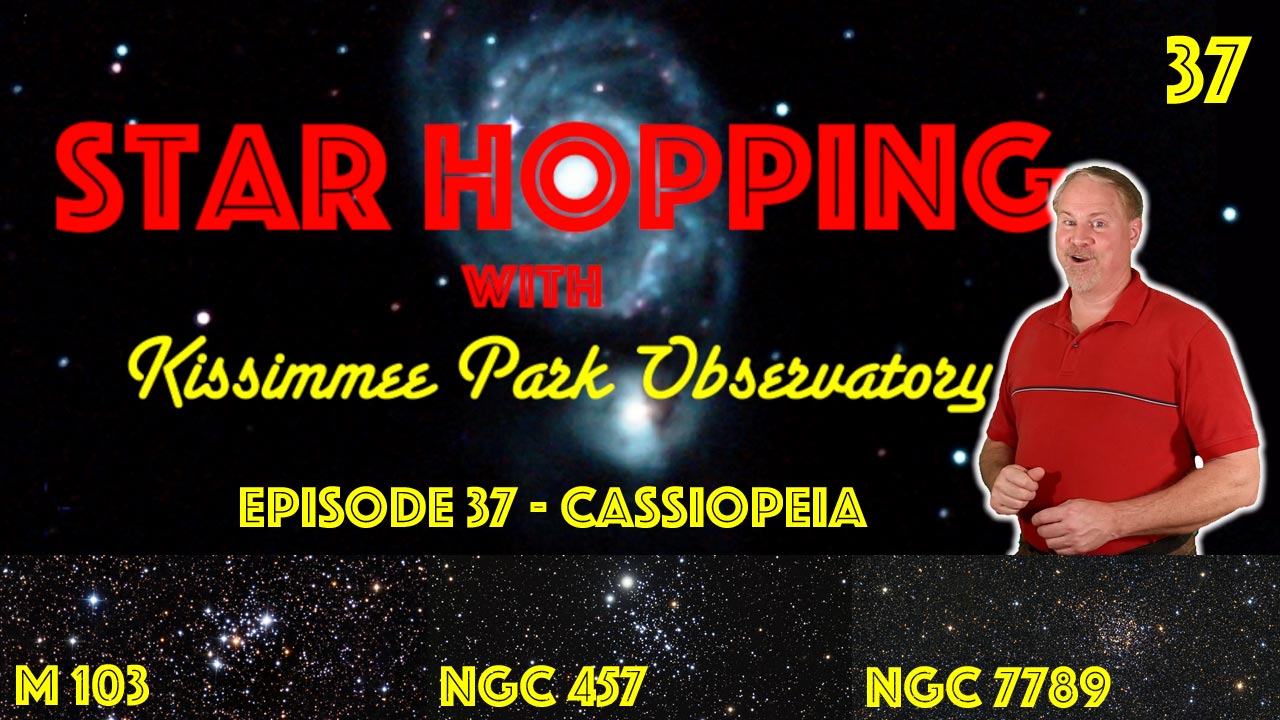In Episode SH037 of Star Hopping…
We’ll look at the Cassiopeia region, and show you how to find the nice open cluster Messier 103, the unique open cluster NGC 457, also known as the E.T. Cluster, and the gorgeous dense open cluster, NGC 7789, also known as Caroline’s Rose Cluster.
Intro
As we continue to look into the future for star hopping target throughout the summer, this week’s episode is going to focus on a constellation that will be halfway up in the northeastern sky around midnight, in the middle of July: the great “W” shaped asterism, Cassiopeia.
Since the sun is setting so late, we don’t even really get a good dark sky until 10:00 PM or so, and even later if you live in the more northerly latitudes. So it’s probable that during the mid summer months you’ll be staying up late to check out the dark skies.
Speaking of northern latitudes, in a few weeks after we start the upcoming European Astronomy Tour, we’ll be in Norway, where the sun doesn’t set at all on the Summer Solstice. It’s pretty hard to do any real observing there in the summer months. That’s why they call it The “Land of the Midnight Sun”. When we’re there, I’ll be showing you the fiery northwestern sky at 11 PM at night. So stay tuned here on our YouTube channel for more details – I’ll be telling you more at the end of tonight’s episode, so stay tuned.
But I digress – back to Cassiopeia. It’s easy to locate the great W in the sky that is the constellation of Cassiopeia. It lies directly opposite the north celestial pole from The Big Dipper, which is part of the constellation of Ursa Major. If you can find the Big Dipper, use the Pole Pointers, Merak and Dubhe, to find Polaris. Then look to the lower right and you’ll see the large W in the sky – that’s Cassiopeia.
Cassiopeia is loaded with deep sky objects because the Milky Way runs right through it. Most of these are stunning open clusters, but there are heaps of nebulae as well. Tonight I am going to show you three really nice open clusters, easily found with binoculars or the smallest of telescopes.
The first one we’ll locate was the last object that Charles Messier added to his famous catalog of non-comets. We’ll see it, right after this break…
CLICK >>> Watch this Episode on YouTube!
Let us know your Questions and Comments!
Please feel free to leave a question or comment below, and we will respond as quickly as we can. You can also reach out to Dave on Twitter @StarHoppingMan.
Connect with Star Hopping!
We would love to have you join us on our various social media sites, and subscribe to our newsletter. Visit our Contact page to connect with us!
Credits for this Episode
- Star Chart Images & Simulations Courtesy of SkySafari Astronomy http://SkySafariAstronomy.com.
- M103 image by Fred Herrmann
- NGC 457 image by Ruben Kier
- NGC 7789 image by Albert Barr


